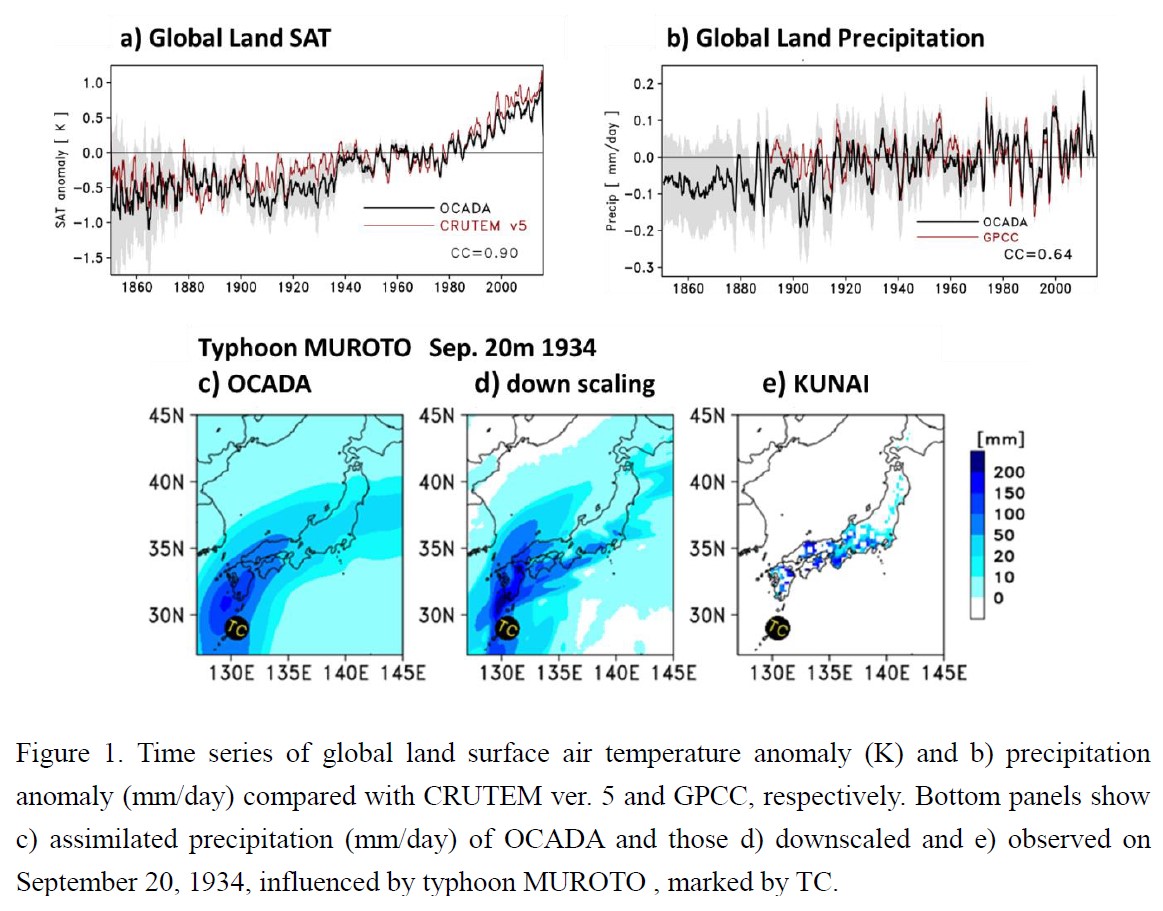JMSJ Highlights
Editor's Highlight : Ishii et al. (2024)
Ishii, M., H. Kamahori, H. Kubota, M. Zaiki, R. Mizuta, H. Kawase, M. Nosaka, H. Yoshimura, N. Oshima, E. Shindo, H. Koyama, M. Mori, S. Hirahara, Y. Imada, K. Yoshida, T. Nozawa, T. Takemi, T. Maki and A. Nishimura, 2024: Global historical reanalysis with a 60-km AGCM and surface pressure observations: OCADA. J. Meteor. Soc. Japan, 102.
https://doi.org/10.2151/jmsj.2024-010.
Graphical Abstract
Special Edition on Research on "Heavy rainfall and snowfall, and moisture transport"
Editor in charge: Dr. Wataru Yanase
-
I highlight this paper which presents the development of a historical atmospheric reanalysis OCADA along with its validations and applications.
- Surface pressure observations in East and Southeast Asia, which are newly archived and used in this study, account for 15 % of the database in the early 20th century.
- OCADA is superior in representing the intensities of observed tropical cyclones in 1979-2015.
- OCADA reproduces several extreme precipitation events in Japan before World War II.

Abstract
A historical atmospheric reanalysis from 1850 to 2015 was performed using an atmospheric general circulation model assimilating surface pressure observations archived in international databases, with perturbed observational sea surface temperatures as a lower boundary condition. Posterior spread during data assimilation provides quantitative information on the uncertainty in the historical reanalysis. The reanalysis reproduces the evolution of the three-dimensional atmosphere close to those of the operational centers. Newly archived surface pressure observations greatly reduced the uncertainties in the present reanalysis over East Asia in the early 20th century. A scheme for assimilating tropical cyclone tracks and intensities was developed. The scheme was superior to the present several reanalyses in reproducing the intensity close to the observations and the positions. The reanalysis provides possible images of atmospheric circulations before reanalyses with full-scale observations become available, and opportunities for investigating extreme events that occurred before World War II. Incorporating dynamical downscaling with a regional model that includes detailed topography and sophisticated physics is an application of historical reanalysis to reveal the details of past extreme events. Some examples of past heavy rainfall events in Japan are shown using a downscaling experiment, together with dense rainfall observations over the Japanese islands.






